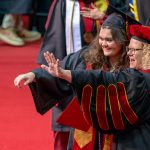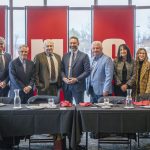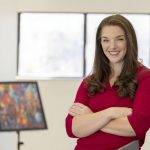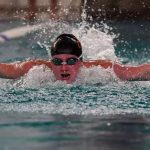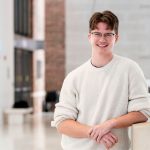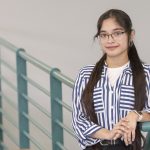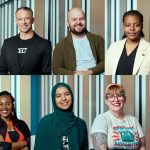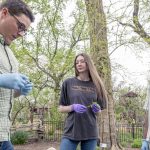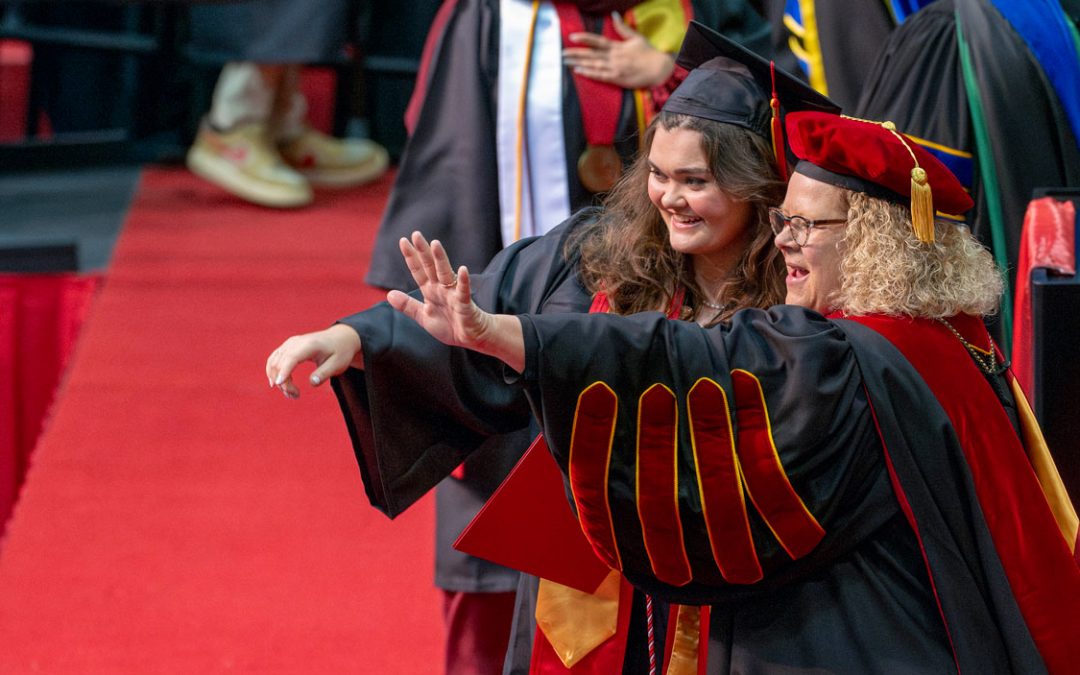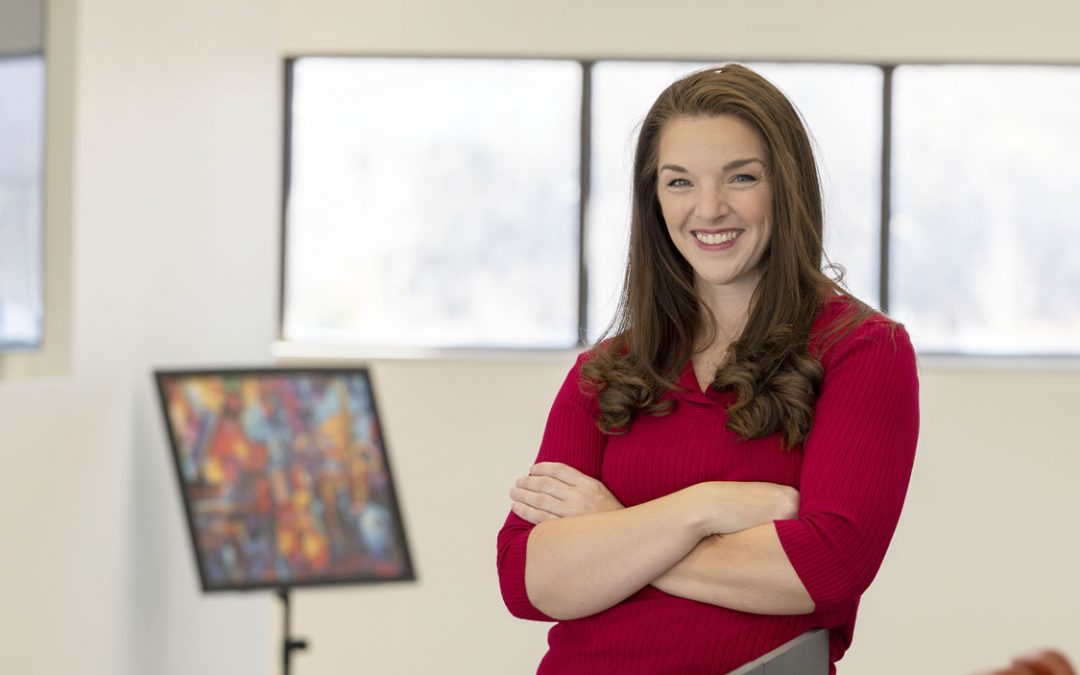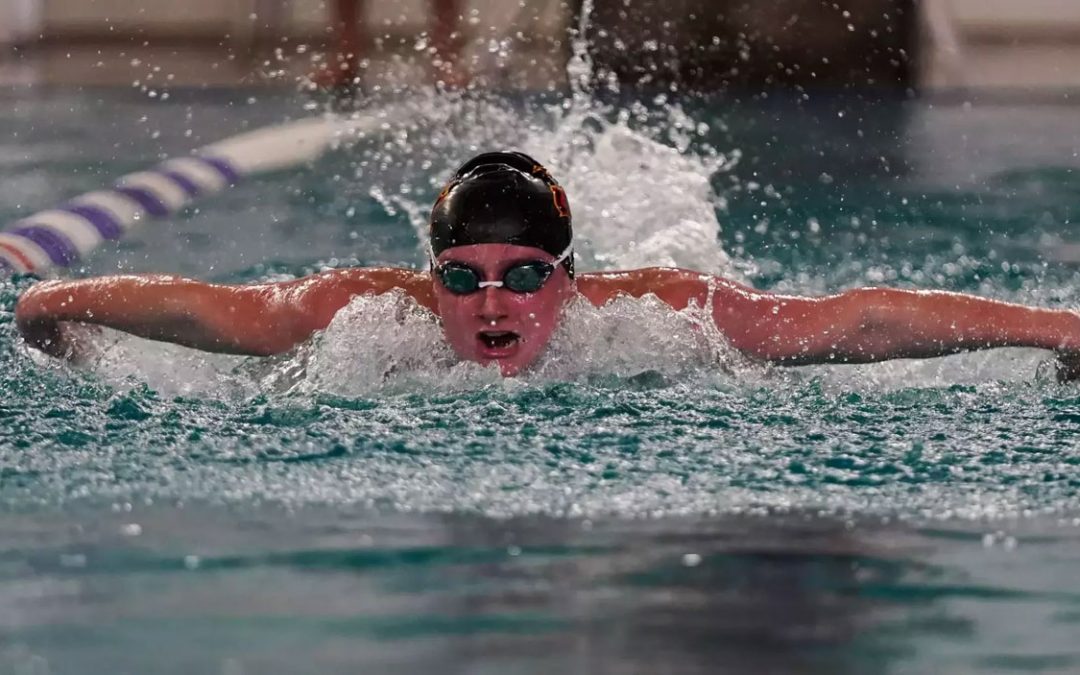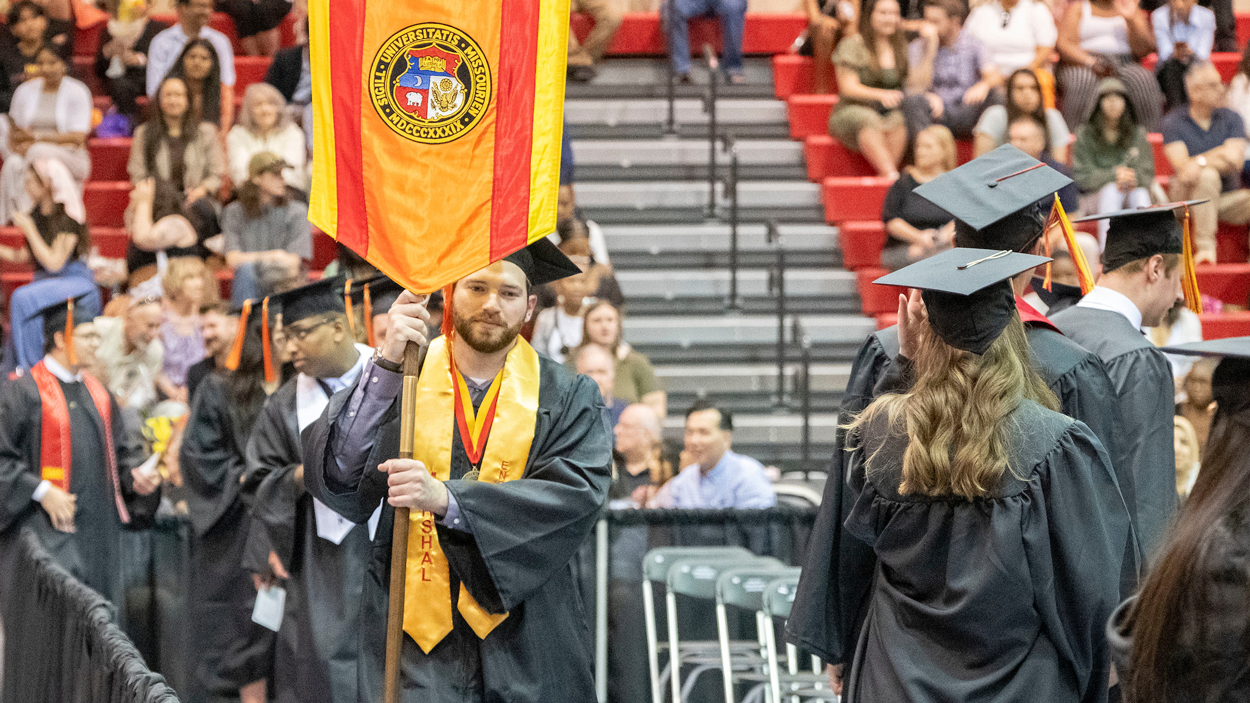
Kyle Stallings leads the University of Missouri–St. Louis/Washington University Joint Undergraduate Engineering Program graduates as student marshal during May’s commencement ceremony. (Photo by Derik Holtmann)
Kyle Stallings grew up as a Lego kid. He owned plenty of Erector sets, too. Not only would he follow the instructions to build the intended structure, but the future engineering student loved to imagine what else was possible and use his creativity to go above and beyond.
Sometimes, he admitted, that would result in a spectacular structural failure. Most of the time, though, tapping into that inventiveness helped him create something completely new, and those successes – and the failures, too – nurtured the seeds of his future educational choices at the University of Missouri–St. Louis.
“I just wanted to build and design things,” Stallings said. “To me, the goal is to just invent things, to be like, ‘Hey, I’m the one who built that. That was my idea. I worked together with others to build it.’”
Those childhood problem-solving skills were put to the test often during his time in the Joint Engineering Program. Stallings, who graduated in May and recently started a full-time position at Boeing, fondly remembers the senior design project mechanical engineering students typically undertake in their final summer semester.
Stallings was part of a group tackling a real-world challenge for Intramotev, a startup rail company whose primary focus is developing zero-emission battery-electric self-propelled rail cars.
“We had to design a way to automate the manual switch-track mechanisms,” Stallings said. “The way it is now, if they’re going to switch a track, someone has to get off the train and manually pull a lever down. We were challenged to figure out a way to take an existing manual lever and make it automated. We decided to use winches, to put a winch on each side, automated with an ESP32 microcontroller so you can just pull an app up on your phone, click it and it will move left or right. That was the biggest project I had done in this program, or in general. It was a lot of trial and error, where we would have an idea, we would try it out, and then be like, ‘Oh, this doesn’t work.’ Either we ordered the wrong part or we didn’t measure right, and then we had to fix it. My team had a lot of fun figuring it out.”
Stallings will use those same skills with his new position as a platform integration technical design engineer at Boeing, a role he just started last week.
“I’ll be helping teams figure out how to integrate elements onto the platform,” Stallings said. “So with any of our jets, I’ll be one of the people looking at data, trying to figure out if there’s anything wrong with it or what’s going on with it. How can we integrate new things to it? And hopefully I’ll use that as a stepping stone, because I would really like to get to the point where I’m actually helping build the platforms themselves. I do believe that’s one of the coolest things we have in St. Louis, the most advanced technology. Hopefully I can get there.”
Stallings has actually been working at Boeing as a part-time design tech since January 2024; instead of a more traditional internship, the nature of that arrangement allows students to work part-time at Boeing through college and maintain that status for an extended period of time after graduation if there are not any immediate full-time openings.
“That was relieving, in the sense of, ‘OK, now I can just focus on school. I know I have basically a guaranteed job afterwards,’” Stallings said. “So it was very nice. Everyone here has been very encouraging, very nice, very much wanting you to succeed. They said if I couldn’t find a spot here, they would talk to anyone I needed to help find a position.”
The helpfulness was a theme he felt throughout his time in the program, a feeling he noticed from his first visit to the UMSL campus to the Introduction to Engineering class that’s required for all freshmen. In addition to all the relevant information about expectations, classwork and support services, there are peer mentors available to give advice to the newcomers.
“That’s probably one of the best things they offer,” Stallings said. “Getting to talk to someone who’s a few years in, getting their experience and hearing their tips for questions like, ‘What should I put on my resume? Where should I apply? How should I look? What should I be focusing on right now?’ It’s just the simple things. And sometimes it’s just a conversation to have with someone like, ‘Hey, I’m kind of stressed about this. Do you have any ideas?’ Most of the time, they’re really just there for you to talk, and then you probably figure it out on your own.”
Having been on the receiving end of that advice, Stallings returned the favor, serving as a teaching assistant for the class the last semester of his junior year.
In fact, Stallings was involved outside of the classroom throughout his time in the Joint Engineering Program. He helped out with multiple recruiting events, including the St. Louis Science Center SciFest, and was an officer for the Society of Future Engineers.
“That’s a pretty cool group because we do host a lot of events, with the goal of trying to bring people together to meet each other,” Stallings said. “One of the benefits of having friends in this world is having connections down the road.”
Because of his active schedule outside the classroom, Stallings was selected as the engineering student marshal for the May commencement ceremony. Being involved was important to him.
“I’m a good student and I do all my work, but I’m not a straight-A student, so I kind of felt like I have to do something else,” Stallings said. “I have to reach out, I have to talk to people. I have to show that even though I’m not a straight-A student, I am still intelligent. I’m still a go-getter. I can do things to help out.”
That’s something he proved over and over during his time in the Joint Engineering Program.


